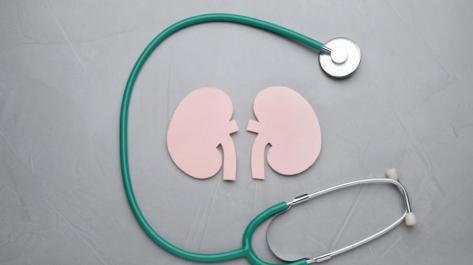March is National Kidney Month

Chronic kidney disease (CKD) is a growing public health problem. This disease affects more than 37 million American adults, with 1 in 3 adults being at risk for the disease. There are 600,000 people living with kidney failure and 100,000 people who are actually waiting for a kidney transplant. Most people do not know that they have CKD or are at risk for it. The leading causes of CKD are diabetes and high blood pressure. Chronic kidney disease, which has no symptoms, can be a life-threatening illness, but often goes undetected until very advanced. People at risk for CKD, “may be able to prevent the need for dialysis and kidney transplantation with early identification and a dedication to healthy habits.” Through simple tests, it can be diagnosed early, managed, and kidney damage can even be slowed or stopped. March is National Kidney Month. In preparation for this event, the National Kidney Foundation (NKF) offers a 6-step primer for protecting one’s health. Listed below are the six steps in abbreviated form.
Step 1: Know These Facts
6 Things Healthy Kidneys Do: regulate the body’s fluid levels, filter wastes and toxins from the blood, release a hormone that regulates blood pressure, activate vitamin D to maintain healthy bones, release the hormone that directs production of red blood cells, and keep blood minerals in balance.
8 Problems CKD Can Cause: cardiovascular disease, heart attack and stroke, high blood pressure, death, weak bones, nerve damage, kidney failure, and anemia.
Step 2: Assess Your Risk
4 Main Risk Factors: diabetes, high blood pressure, cardiovascular disease, and family history of kidney disease or diabetes or high blood pressure. Other risk factors include: over the age of 60 years, obesity, prolonged use of NSAIDS (pain medication such as ibuprofen and naproxen), and chronic urinary tract infections or kidney stones.
Step 3: Recognize Symptoms
8 Possible Trouble Signs: fatigue or weakness; difficult, painful urination; foamy urine; pink, dark urine; puffy eyes; swollen face, hands, abdomen, ankles, feet; increased thirst; and increased need to urinate (especially at night). Poor appetite, difficulty sleeping, dry and itchy skin, and muscle cramping at night are other symptoms.
Step 4: Get Tested
4 Simple, Life-Saving Tests: blood pressure, protein in urine (ACR or albumin-creatinine ratio), creatinine in blood, and glomerular filtration rate (GFR), which tells how well one’s kidneys are working to remove wastes from the blood.
Step 5: Stay Healthy
9 Things Everyone Should Do: exercise regularly, control weight, follow a balanced diet, quit smoking, drink only in moderation, stay hydrated, monitor cholesterol levels, get an annual physical, and know your family medical history. Kidney-healthy snacks include: unsalted nuts (peanuts, almonds, and walnuts), fruits (both fresh and dried), fiber bars, and vegetables (grape tomatoes, carrots, bell peppers, broccoli, cauliflower, and cucumbers). Reducing salt intake, keeping blood sugar levels under control (if diabetic), and maintaining a normal blood pressure are important too.
Step 6: Learn More
Contact the National Kidney Foundation at www.kidney.org or 1-800-622-9010 to learn more about chronic kidney disease.
